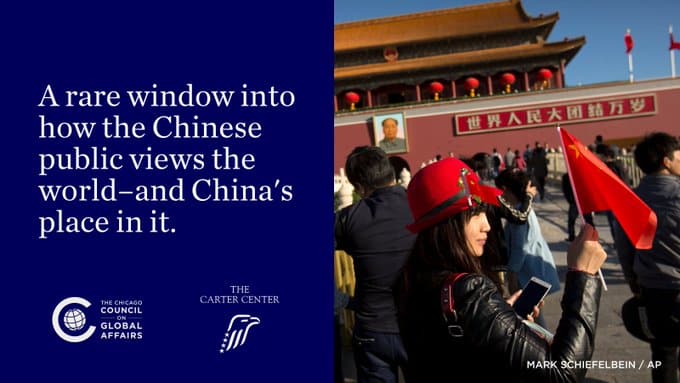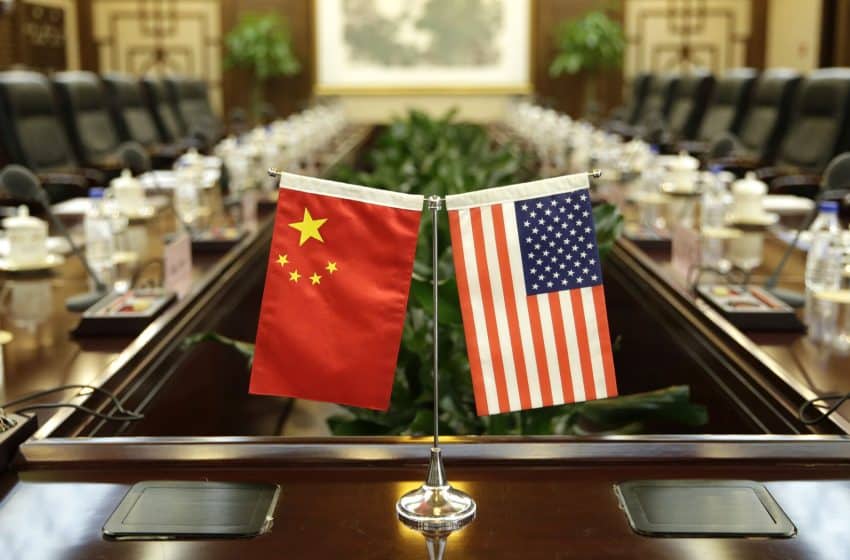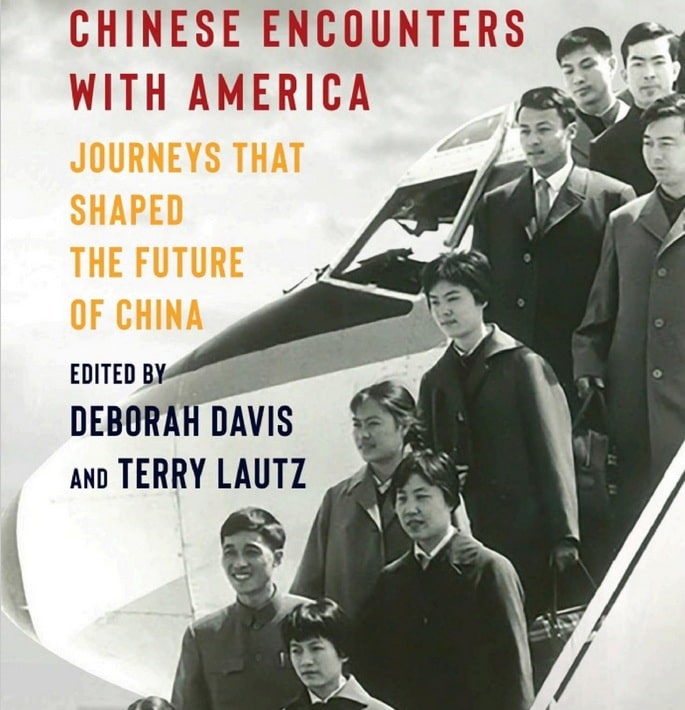Exclusive: On Peter Navarro
 This past July, I found that a colleague of mine had published an article about Peter Navarro, the University of California, Irvine professor who is now a key player in the Donald Trump campaign’s economic team. Navarro, the Harvard-educated economist, is a difficult figure when it comes to China, as his books are often criticized as damaging to the future of US-China relations.
This past July, I found that a colleague of mine had published an article about Peter Navarro, the University of California, Irvine professor who is now a key player in the Donald Trump campaign’s economic team. Navarro, the Harvard-educated economist, is a difficult figure when it comes to China, as his books are often criticized as damaging to the future of US-China relations.
Trump has made no secret of his contempt of China’s politico-economic strategies which he describes as “bad deals” for American workers. Trump’s very public views on China have been criticizes by social leftists and free traders alike, who deem Trump’s pseudo-protectionism as a dangerous step to a much more mercantilist trade policy. With the discovery of Navarro’s influence on Trump’s ideas, it is important to learn more about the UC Irvine professor, who could have an influential role to play in a possible Trump administration.
Naturally, I was quite curious to learn more about this fellow. In order to satisfy my inquisitiveness, I had the opportunity to take a look at two of Dr. Navarro’s books, namely Death by China and Crouching Tiger.
Diamonds in the rough
Death by China was an interesting read. In this 2001 book, which was made into a documentary in 2012, Navarro (with cohort Greg Autry) sets out their (rhetorically hyperbolic but factually argued) thesis that Chinese trade practices were “killing” America’s manufacturing base as well as the economy as a whole. The growth of China’s military and theft through intellectual property violations and hacking remained major national security concerns for the United States.
The most notable thing about the book is the writing style. Death by China possesses a litany of alarmist rhetoric, decrying China’s trade practices and even implying a sort of malevolence within China’s relations with the United States. Navarro and Autry, unsurprisingly, argue that the majority of America’s economic problems involved China in some way.
The implicit takeaway, however, was that China’s practices were personal, that the intention of China was to specifically weaken America’s economy and take away American jobs. This is particularly observable in the first few chapters of the book, in which Navarro and Autry describes cases of Chinese products which were dangerously defective when used in the United States. Although no review that I have read seems to acknowledge this point, I think that Navarro’s rhetoric, which implicitly paints China’s practices toward the United States as a personal attack, is the main inducer of negative criticism for the book. Navarro and Autry’s rhetoric does not paint China as a challenge, but as an existential enemy. Thus, the book is not about dealing with problems between the United States and China but dealing with the problem that is China.
Navarro has tried to shed the accusatory labels of “protectionist” and “mercantilist” in interviews in which he claimed that Trump’s tariffs would only be used as bargaining tools. In terms of Navarro, it is difficult not to characterize someone a mercantilist when they label business leaders “turncoat” when they opt for China over America. Unfortunately, in terms of economics and world affairs it seems to me that Trump and Navarro are mistaken in this point. Trump and Navarro seem to be missing a major point, namely, that the United States is not the only country that China trades with.
The economic policies of Navarro do not seem to take the world as the interconnected place that it is. It seems to limit the world to the United States and China and is, therefore, a zero-sum game, and as Tim Worstall said “The idea that an economist could describe trade as a zero sum game is an absurdity in and of itself. [Trade is] a voluntary exchange – and thus, by definition, it must be beneficial to both parties taking part in it.” Indeed, the world is not so simple as Navarro would have us believe. China definitely poses challenges for the United States, however, it also provides many opportunities for growth.
Navarro and Autry also take time to discuss political, social, and environmental concerns for China, leading to a strange hodgepodge of the dangers of Chinese trade and military policies with the ideological disconnect between China and the United States.
The most unsettling part of the book, however, was the fact that Navarro and Autry actually pointed out important challenges for the United States and China. Intellectual property, currency manipulation, pollution, and military adventurism are not only real issues, but important challenges for the United States and China to face in the coming years. While some reviewers have responded hotly to the apparent lack of reference citations, the book does in fact cite its sources, albeit in an unconventional way.*
Navarro’s work was definitely polemic, but when it comes to China, we are in no short supply of Western scholarship critical of China. Due to the biased and angry rhetoric, is hard to take the book’s arguments seriously (an example of accessible writing taking away from the overall experience) which is a shame, as the challenges posed in the book will be the major talking points of Sino-American relations in the future.
However, Navarro and Autry’s solutions to the challenges posed by China, which includes contacting your Congressperson to avoiding “Made in China” goods, ranges from ineffectual to mercantilist. Navarro and Autry offer no effectual solutions to deal with China which respects the integrated Sino-American trade relationship and security concerns for the Asia-Pacific region. In all, Navarro and Autry offer very strong points that are definitely worth thinking about. Unfortunately, the presentation leaves much to be desired and the book is slow to offer cooperative solutions for the United States and China focusing instead on punishment and brinkmanship.
A sudden turnaround
In Crouching Tiger, the alarmism that plagued Death by China had all but disappeared and was replaced by a much more level-headed approach to prose. In this book, Navarro had transitioned from Chicken Little to a respectable realist thinker.
Navarro goes through a point by point analysis to determine whether the United States and China are bound for war. Following John Mearsheimer’s realist tradition, Navarro calculates not on action, but on capabilities. Like Navarro’s previous work, Crouching Tiger poses real challenges for the United States and China, and in realist fashion, Navarro highlights how China’s growing power has led to a competition between the two powers in the Asia-Pacific region.
However, just as “ought” does not necessarily imply “is”, “can” does not necessarily imply “will.” While Navarro highlights reasons for political tensions in the Asia-Pacific region stemming from difficult US-China relations, he makes a logical leap that this situation will lead to war. Navarro does not provide a straw to break the camel’s back. As Mearsheimer mentions in Chapter 2 of The Tragedy of Great Power Politics while the “threat of great power war has not yet disappeared”, war is not necessarily “likely.”
This is not to say that Navarro’s work is not important. Crouching Tiger provides a harsh dose of realism into a liberal institutionalism rapidly becoming liberal utopianism. By introducing the heavy military, economic, and political challenges for the United States and China, Navarro provides an important interpretation of world affairs which political calculators would do well into incorporate into a more holistic interpretation of the global situation.
Unfortunately, most followers of Navarro are likely to diagnose the political situation and prescribe a dose of hard (military) power. Using Joseph Nye’s terminology, the United States will need “smart power” a strong mixture of hard and soft power in order to maintain its position in Asia.
Navarro provides an important view to the US-China relations discussion. Thinkers cannot continue to pretend Navarro’s black-and-white view of US-China relations does not exist. It is a worldview shared by many and is not something can be fixed by “educating” them. The most important thing, however, is to beware of those who live on theory alone as the real situation is consistently changing and will require an outlook that addresses the actual situation.
The United States and China faces a variety of challenges and opportunities. While Navarro provides a specific lens in interpreting the geopolitical situation, it is important to recognize that Navarro’s view is just one voice among many. Thinkers would do well not to immediately disregard Navarro, however, they should be wary of those who live on theory alone and be cautious to implement much of Navarro’s security-oriented and mercantilist views.
It is interesting, however to see the wellspring of much of Donald Trump’s views on US-China relations. It seems that the candidate who cites his “very good brain” as his foreign policy consultant, is still subject to John Maynard Keynes quote in his General Theory:
“The ideas of economists and political philosophers, both when they are right and when they are wrong, are more powerful than is commonly understood. Indeed, the world is ruled by little else. Practical men, who believe themselves to be quite exempt from any intellectual influence, are usually the slaves of some defunct economist.”
By AARON WALAYAT, USCNPM Contributor, 26 September 2016










